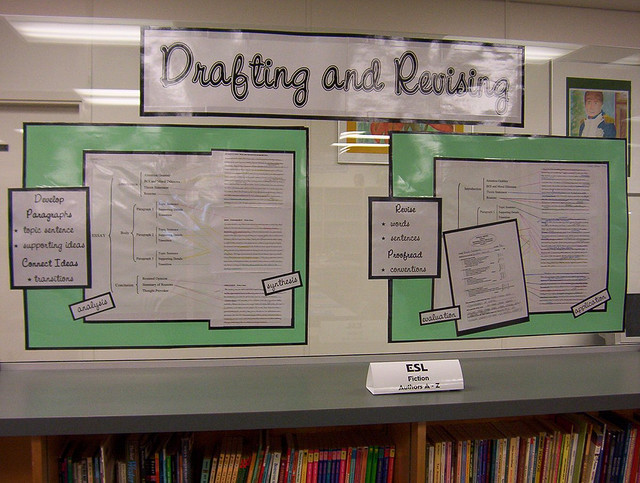Purpose-Oriented Writing Exercises: Teaching Revision 16
School is almost back in session, and the blog is back with some writing exercises meant to help students with various elements of craft. If you’d like to contribute a guest post or response, please contact me at m [dot] salesses [at gmail etc.].
For vulnerability/introductions
- List 3 moments in which you felt you were not yourself.
- Distribute lists randomly among the class.
- Write a story using at least two of the three things
First page exercise
- Share and read the first page of a new or in-progress story, in a group of 3.
- The two readers should a. describe the story, b. say where they think it is going, c. name what is most interesting.
- Rewrite your opening without looking at the old first page.
For audience:
- Name the one person or few people who first see your work/to whom you’re writing and who would get every reference–e.g. my best friend from grad school.
- Describe an audience of about 1,000 who would be ideal readers for your book/whom you hope to reach–e.g. college graduate male Korean American adoptees politically active between 30 and 40, in a heterosexual relationship with kids, who read more than 20 books a year.
- Describe an audience of about 20,000 who would make your book a best-seller–e.g. college graduate Asian Americans between 30 and 40, with kids, who are politically active and read more than 20 books a year.
For plot/the “but for” moment:
- In five minutes, write as many sentences as you can that follow this format: If s/h/t hadn’t __________, __________ wouldn’t have ___________.
- Expand one of the sentences into a paragraph, including a full set of actions and character(s).
- Expand the paragraph into a scene.
For characterization:
In five minutes, write as many sentences as you can about the same character that begin: S/h/t was the type of person who _________. Push past the obvious and easy.
For point of view:
- Tell the story of a moment that happened to you this week, but in third person. Create a character to fit the scene/fictionalize.
- Go ten years in the future. That moment has turned out to be extremely momentous—it has changed this character’s life. Now tell the moment from the perspective of the character ten years on, looking back with a sense of how momentous the moment turned out to be. Do this in first person.
For voice:
- List your fears, both past and present.
- Write a scene in which one of your fears plays out. Write it in the victim’s voice.
- Write the same scene from the aggressor’s voice. Or perhaps from the voice of a non-active witness.
For structure:
Write a structural metaphor for your story–e.g. the dolphin that surfaces beside the boat as a structural metaphor for the way the story keeps skimming along the surface/dipping into the past. (Bad example, but you get the point.)
For prolepsis & true/false mystery:
Write a short story that starts with the sentence: “By the end of this story, character x and character y will fall in love and, in so-doing, character x will murder character y.
For tone:
Exaggerate an inconsequential event in which you participated sometime this week.
For objects:
Write a story with two important objects in play, one on display in the story and one hidden.

